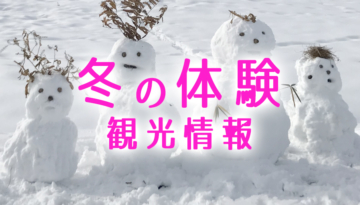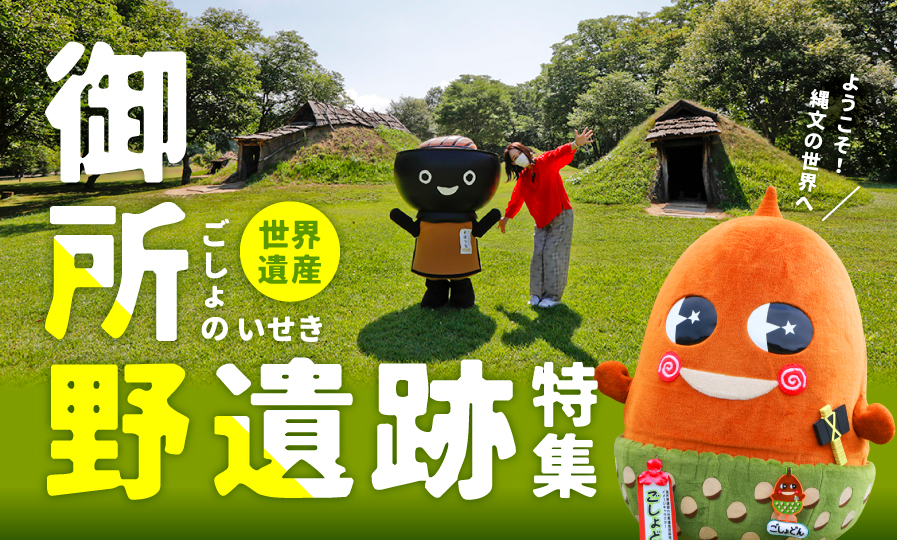
On July 27, 2021, "Jomon Ruins in Hokkaido and Northern Tohoku" (Hokkaido, Aomori Prefecture, Iwate Prefecture, Akita Prefecture) was registered as a World Heritage Site by the United Nations Educational, Scientific and Cultural Organization (UNESCO) World Heritage Committee. Ta.
The ``Jomon Sites in Hokkaido and Northern Tohoku'' consists of 17 representative sites from each period from the early to late Jomon period, scattered across four prefectures: Hokkaido, Aomori, Akita, and Iwate. .
It is Japan's oldest World Cultural Heritage Site, demonstrating the existence of a complex spiritual culture that was rare in world history and consisted of hunting, gathering, and fishing, leading to a sedentary lifestyle without farming, as well as rituals.
The Goshono ruins are thought to be the remains of a village with a place for rituals, where people settled for 800 years during the late middle Jomon period (5000 to 4200 years ago), and are an important key to understanding Jomon society.
INDEX
*The content posted is as of August 6, 2021.

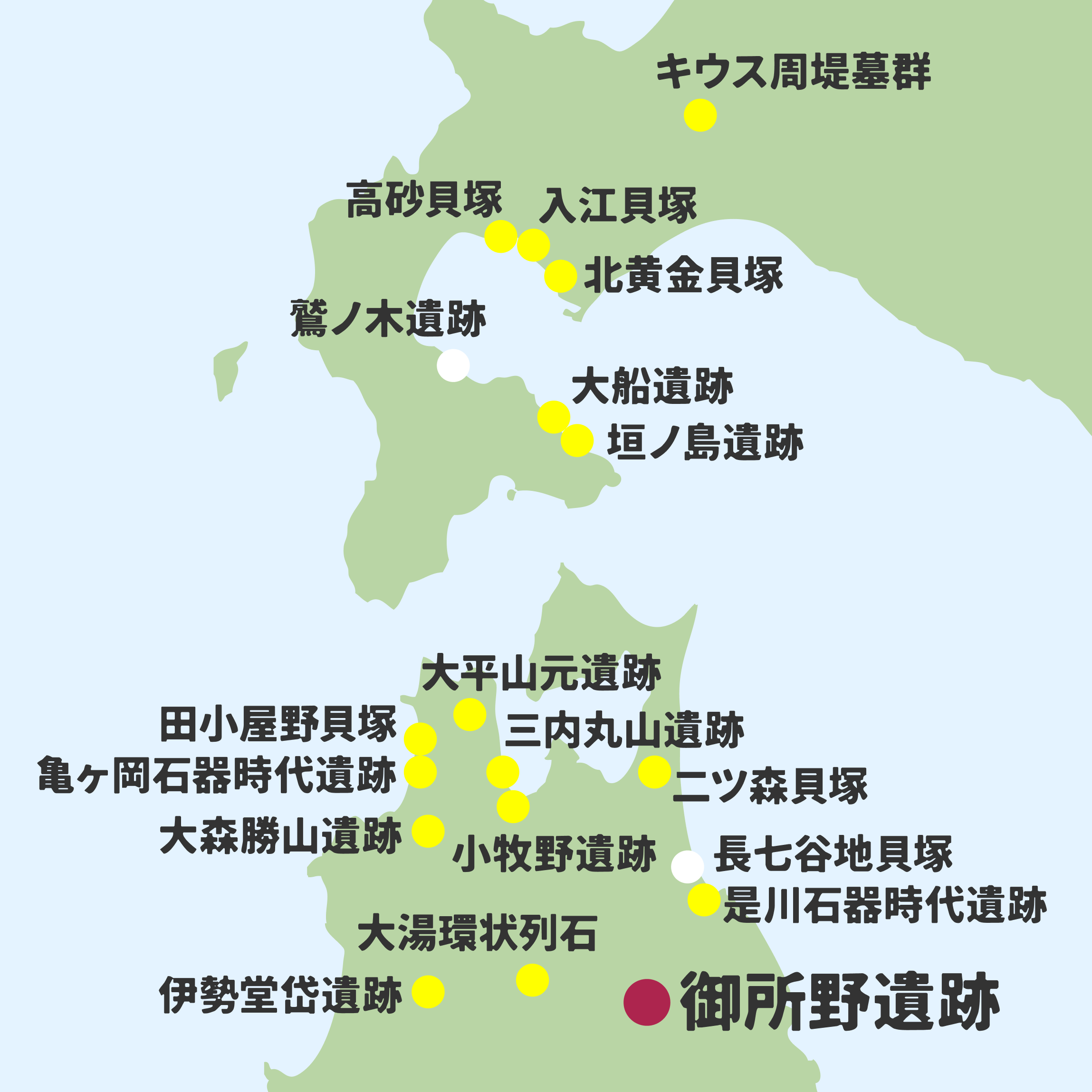
“Goshodon”
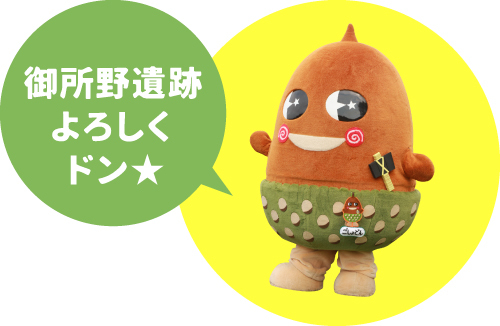
An acorn fairy that came from the Jomon period about 4,500 years ago.
Although she has a modest and crybaby personality, she is working hard every day to promote Ichinohe Town’s world cultural heritage site, the Goshono Ruins!
Her big sparkling eyes are her charm point.
Everyone! Thank you for your support Don☆
Goshono Jomon Park

In 1989, the remains of a pit building from the Jomon period were discovered in Goshono, Ichinohe Town, Iwate Prefecture, and excavations began. A survey was conducted to confirm its contents until 1992, and it was designated as a national historic site in 1993. After that, further research was carried out, and in 2002, it was opened as the current “Goshono Jomon Park”.
Further investigation and research is currently ongoing, and it has been discovered that there are more than 1,000 residential ruins left over an area as large as 75,000 square meters.
Inside the park, you can see the landscape of a Jomon village with restored mud-roofed houses, centered around stone circles.
At the attached Goshono Jomon Museum, you can learn about Jomon culture and the history of Ichinohe Town, centering on the Goshono Ruins, as well as a full menu of hands-on experiences.
Kikiki’s fishing chopsticks

This is the entrance to the wooden pedestrian bridge “Kikiki no Tsurihashi” that connects the parking lot and Goshono Jomon Park.
Sobacchi, let’s go!

②The curved interior is like a time tunnel!
③The length is approximately 120m. The sound of water flowing under the suspension bridge and the sound of leaves rustling in the wind will pleasantly transport you to the Jomon world.
Goshono ruins
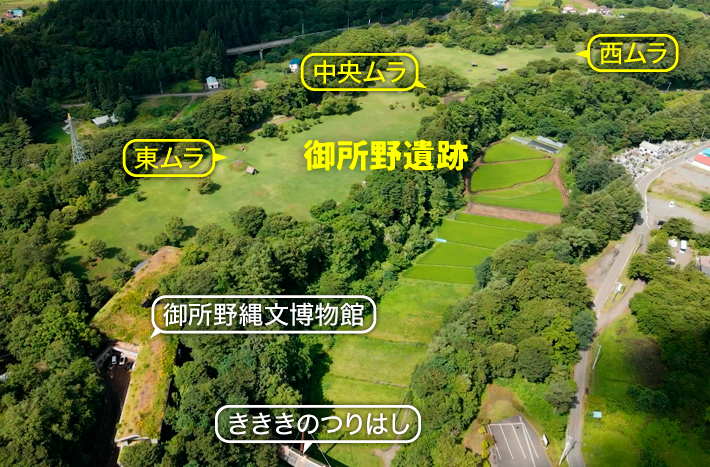
There are three villages in the Goshono ruins: east village, central village, and west village. Surrounded by rivers on three sides and facing mountains on the other side, it is a land full of rich nature.
pit building
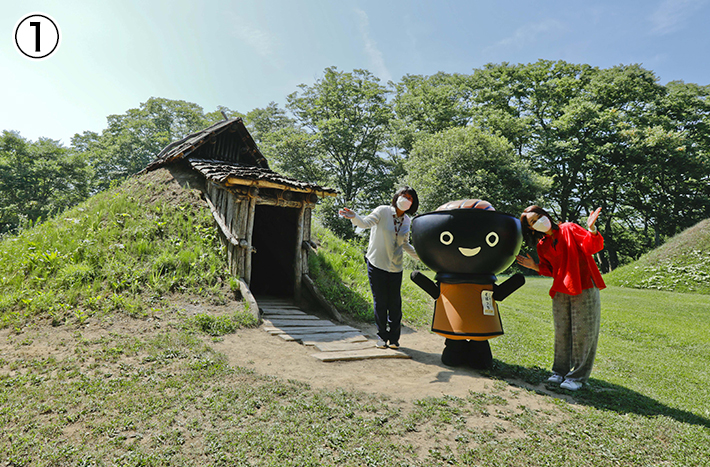
① A pit building with an earthen roof in the central village.
“Continuous restoration efforts have been made, including restoring the building based on surveys of the ruins of the burnt pit building and verifying it through burnout experiments.The results of these efforts led to the current registration as a World Heritage Site. ” said Noriko Kanno of the Ichinohe Town Board of Education.
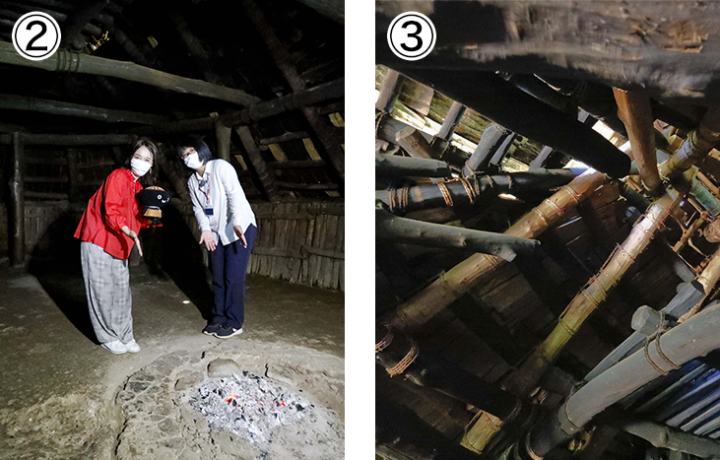
②There was a furnace near the entrance to the residence. It is possible that Jomon pottery was used for cooking here.
③The number and position of the pillars have been restored based on the results of the excavation survey.

④The grounds are full of plants that the Jomon people used for daily life and trees that produced fruit that they used as food!
⑤Blue burrs are growing abundantly. In addition to eating the fruit of chestnut trees, the trees and branches were used as construction materials for pit buildings, and the bark was used as the base material for the roofs of pit buildings.
stone layout remains
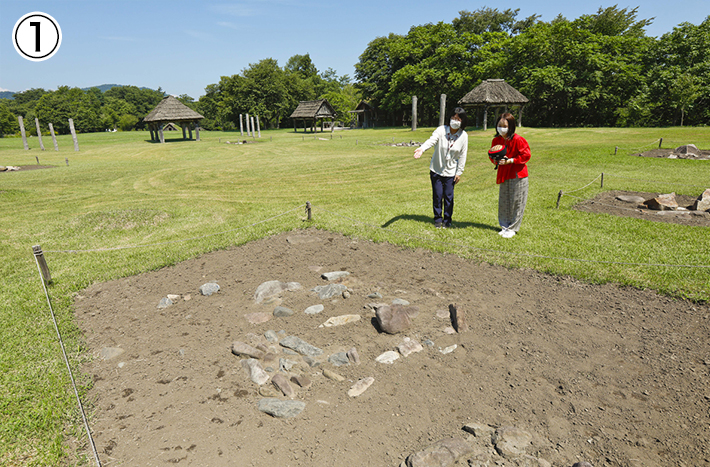
Stone layout ruins are made up of stones of a size that can be transported in various shapes. At the Goshono ruins, they are lined up like two large rings, and are thought to be graves or ritual sites.
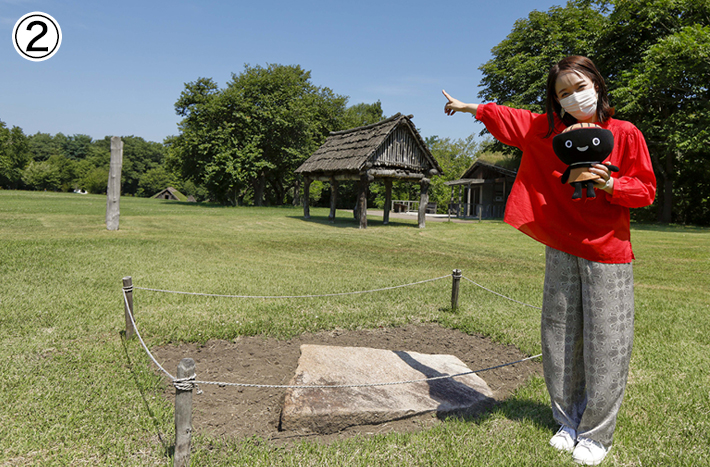
② I was surprised to hear Mr. Kanno say, “It is clear that this stone was brought in from Moyayama, which is located far away, in the direction of that tree.” The distance to the Goshono ruins is approximately 3 kilometers in a straight line. How was it transported?
moat standing pillar building

Embankment remains

①Stone-laying ruins are thought to have been built on areas where the level was intentionally shaved off, and the excavated soil was heaped high, so they are called “mori-doikou”. From here, many remains of a hearth were found, along with pottery, stone tools, burnt animal bones, and nuts.
Goshono Jomon Museum

①The exterior resembles the clay roof of the ruins and blends beautifully into the surrounding landscape.
② Green roofs also have the advantage of being cooler in the summer and warmer in the winter.

③In the first exhibition room, the ruins of a 4,200-year-old burnt-down dwelling are displayed under a glass floor, and you can watch videos of the excavation and restoration process.

④The entire second exhibition room is an impressive projection mapping! This 12-minute video introduces the seasonal lifestyle of the Jomon people through dynamic images and sound.
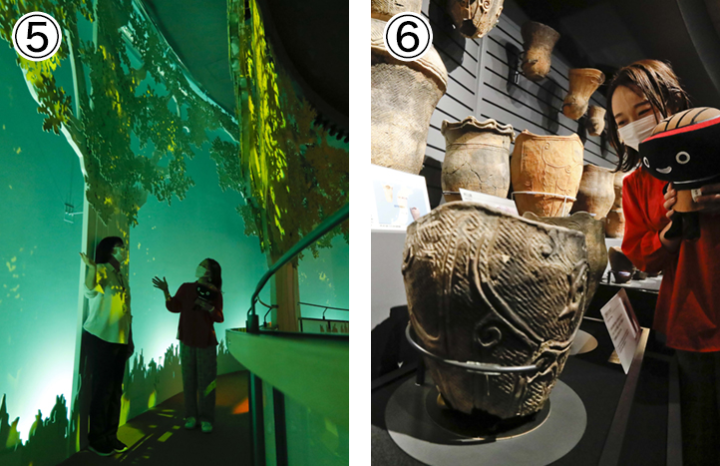
⑤The fantastic performance will bring smiles to both children and adults.
⑥ Earthenware displayed in the second exhibition room. The delicate patterns and powerful swirling patterns are truly thrilling!

⑦In the third exhibition room where excavated items from the Makumae ruins and the Yamai ruins in Ichinohe Town are lined up, you can come face to face with the National Important Cultural Property “Hanamagari Domen”! I can’t help but imagine what kind of rituals were performed using this mask.
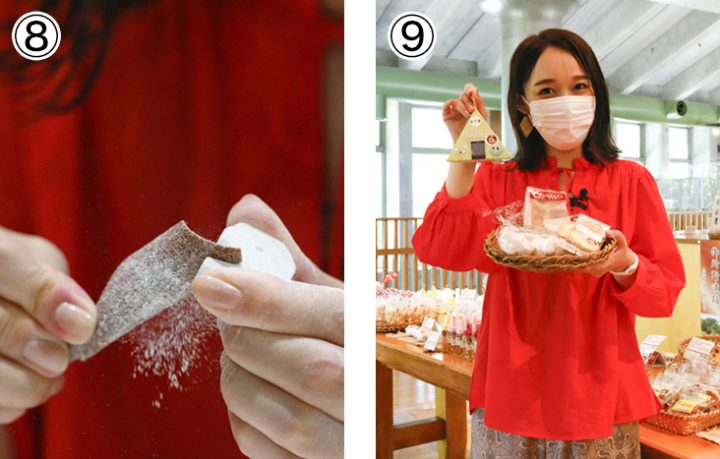
⑧Try making magatama at the indoor experience workshop! Did you know that the history of magatama dates back to Japan’s Jomon period?
⑨The museum shop has lots of exciting and fun original products! The souvenirs that can only be purchased here are sure to please.

⑩”The Goshono Ruins, which has become a World Heritage Site, still has much of the same nature as it did during the Jomon period. Please come and visit us,” said Mr. Kanno. Everyone, we are waiting for you!
Goshono Jomon Park
- Address
- Goshono, Iwate, Ichinohe-machi, Ninohe-gun, Iwate Prefecture
- Inquiries
- 0195-32-2652
- Access
- Approximately 5 minutes by car from IGR Ichinohe Station Jomon Taxi (subsidy available)
- Business Hours
- 9:00-17:00 (Museum admission until 16:30)
[Closed] Every Monday (if Monday is a public holiday, the following day), the day after a public holiday (excluding Saturdays and Sundays), and New Year's holidays
*Temporarily closed due to circumstances

Self-help workshop Shiki no Sato
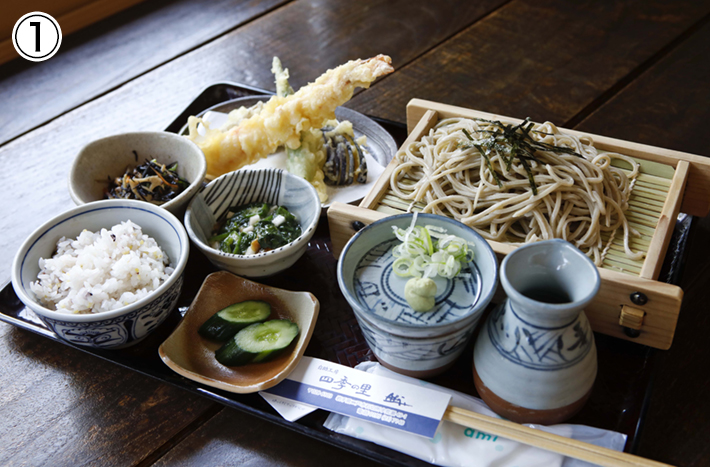
① “Jisuke Kobo Shiki no Sato” is adjacent to the main factory of “Komatsu Seika”, which is famous for “Nanbu Senbei Nobandeya”.
Made with 100% buckwheat flour from Iwate that is carefully peeled and stone-ground. The soba noodles, which are hand-made every day, are fragrant and shiny. I can’t stop eating chopsticks with the crispy fried tempura.
“Four Seasons Village Set” ¥1,590 (tax included)

②In addition to comfortable table seats in the main building with its high ceiling, there are also tatami seats where you can enjoy the beautiful view of the garden.
③A shop that lets you feel the warmth of your hometown and the heart of the South. The smiles of all the staff are wonderful.
Kita no Chocolate Factory & Store 2door

①Chocolate Nambu is a popular product that has won numerous international awards.
2door is a name that comes from the meaning of “Ninohe” and the tradition and fusion of Nanbu Senbei and chocolate.
②Colorful, just like a land of sweets!
There is a factory inside the store, and you can observe the manufacturing process of products such as “Chocolate Nanbu Premium” through the glass.

③ “Original Senbei Cup Experience ¥500 (tax included)” and “Original Chocolate Nanbu Experience Corner” that you can participate in for free are also popular!
④ At the “Original Senbei Cup Experience”, you can create a cute cup filled with your favorite rice crackers!
*Currently, the original chocolate Nanbu experience is closed (reopening date to be determined)

⑤ Corner with limited edition products only available at 2door. It’s a fun time getting lost in all sorts of things.

⑥The cafe menu is also extensive, and on this day I had the “Cacao Fruit Smoothie”, which is limited to 20 cups each day, for ¥400 (tax included). Even the soba noodles were surprised by the unexpectedly refreshing taste! This is going to become a habit!
*Cacao fruit smoothie is available only during the summer.
⑦Take a break on the open terrace seat.
Tekiseisha

①The lacquerware produced and sold uses locally produced Joboji lacquer. Inside the store, we are proposing ways to use lacquerware in daily life that will continue to be loved for a long time.
②The more you use lacquerware, the more its flavor increases and the more you use it, the more it becomes glossy.
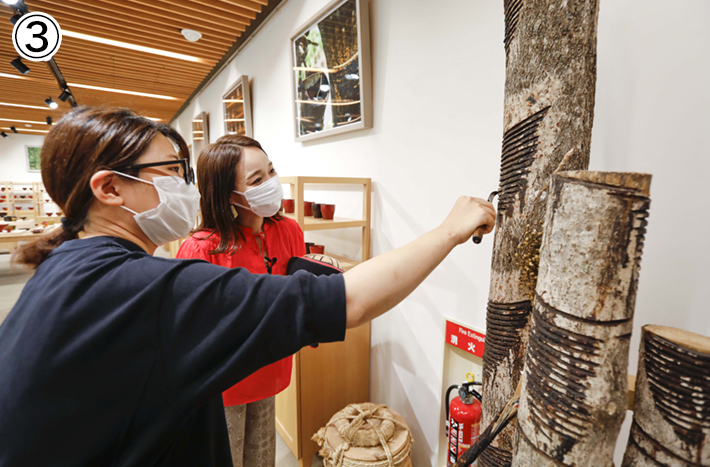
③ Joboji-cho, Ninohe City boasts the largest production of lacquer in Japan. It was refreshing to hear a valuable story about harvesting, which is something you don’t often get to hear about.
I remembered that lacquerware was also excavated from the Goshono ruins, and felt the connection between people and lacquer from ancient times.
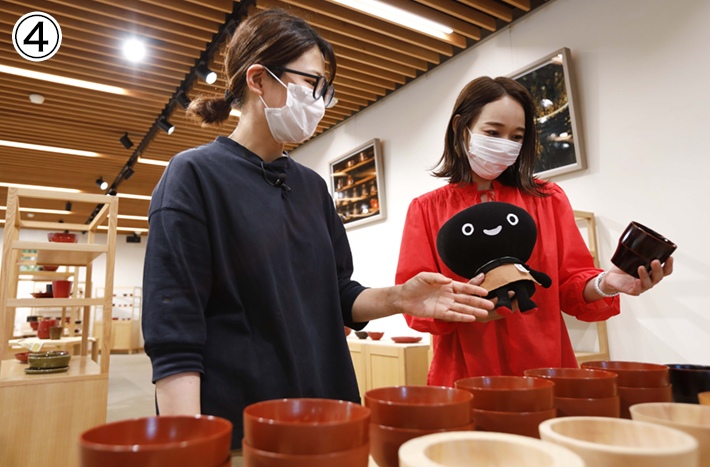
④Jobōji lacquerware called “layered coating”. I admire the traditional techniques.
We learned about the charm of the product: it is light, has a gentle texture, and can be repaired even if it gets damaged so that it can last a lifetime.
Tendaiji Temple
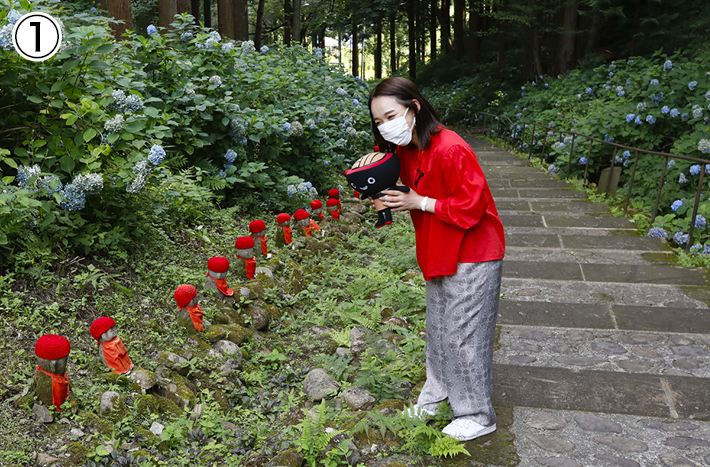
① What greeted us at the hydrangea approach were adorable Mamejizo statues enshrined here and there.
It seems that the red hats and aprons were replaced by 6th grade students from the local Joboji Elementary School.
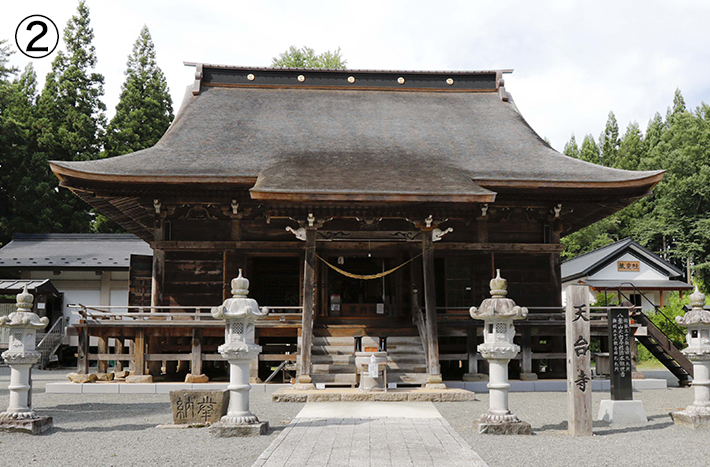
②In March 2021, the preservation and repair work that took six and a half years was completed, and Tendaiji, an important cultural property, has returned to its original appearance for the first time in 360 years.
The roof of the main hall has been restored to a “Tochitake” layered with cedar boards, and the Niomon gate has been restored to a “Kokeratake”.
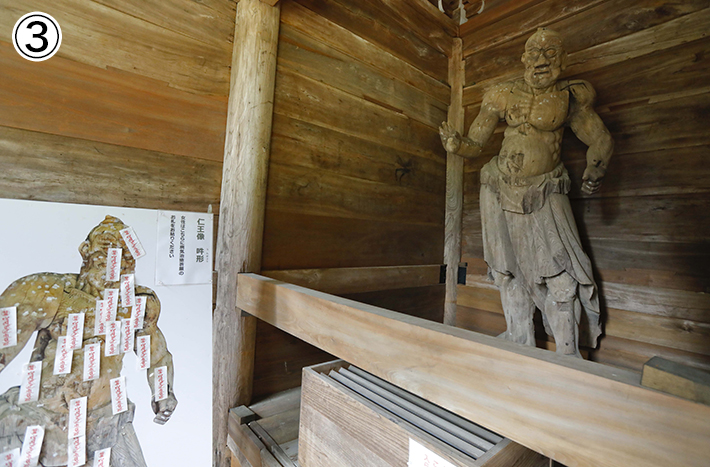
③The statue of Nio, said to have been created by Unkei during the Kamakura period, has a talisman attached to the same area (currently a panel) as the affected area to pray for healing from illness or injury.
Men should visit the Agyo statue on the right, and women should worship at the Ungyo statue on the left.
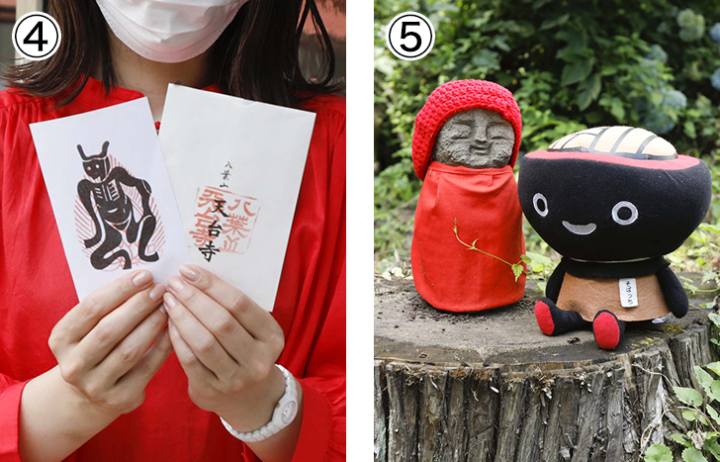
④Talisman “Kakudaishi”. The plague is gone! I hope that the new coronavirus infection will end as soon as possible.
⑤ Sobachi looks happy with the two shots with Mame Jizo.
Okunakayama Plateau
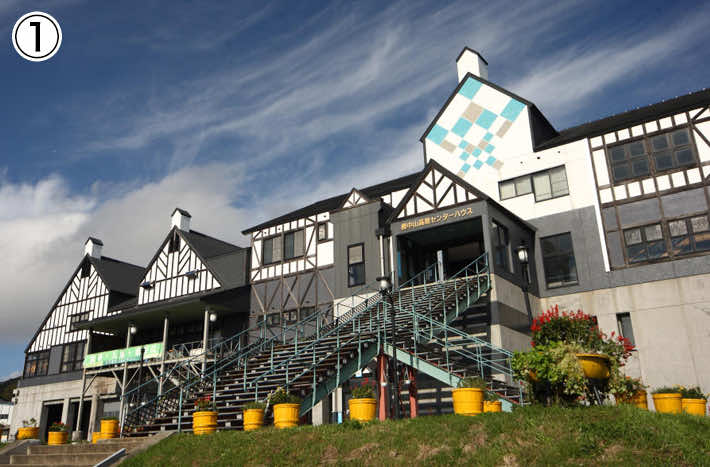
① Accommodation facility located 700m up the mountainside of Mt. Nishidake. You can fully enjoy the seasonal beauty of nature, including fishing, playground equipment, and ski resorts.
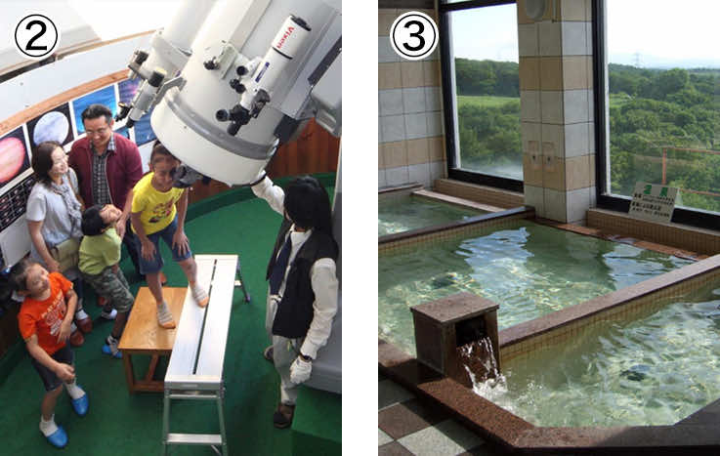
②An observatory that boasts one of the best starry skies in the country.
*Advance reservations are required for use in 2021.
③Weakly alkaline Okunakayama Kogen Hot Spring. It is especially popular among women as it makes their skin smooth.
Tendai no Yu

① “Urushi no Ma” is made with luxurious lacquer from Joboji, Ninohe City. There is one Japanese-style room and one Western-style twin room.
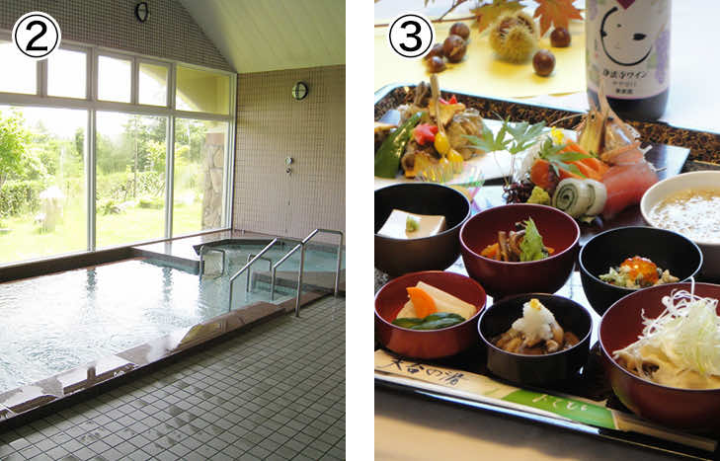
② “Tendai no Yu” was named by Jakucho Setouchi, honorary chief priest of Tendaiji Temple. There is a large public bath and sauna with slightly alkaline mineral springs that contain a well-balanced amount of natural minerals, and you can also take a day trip bath.
③Food that is carefully prepared, one by one, with a focus on local, seasonal flavors.

